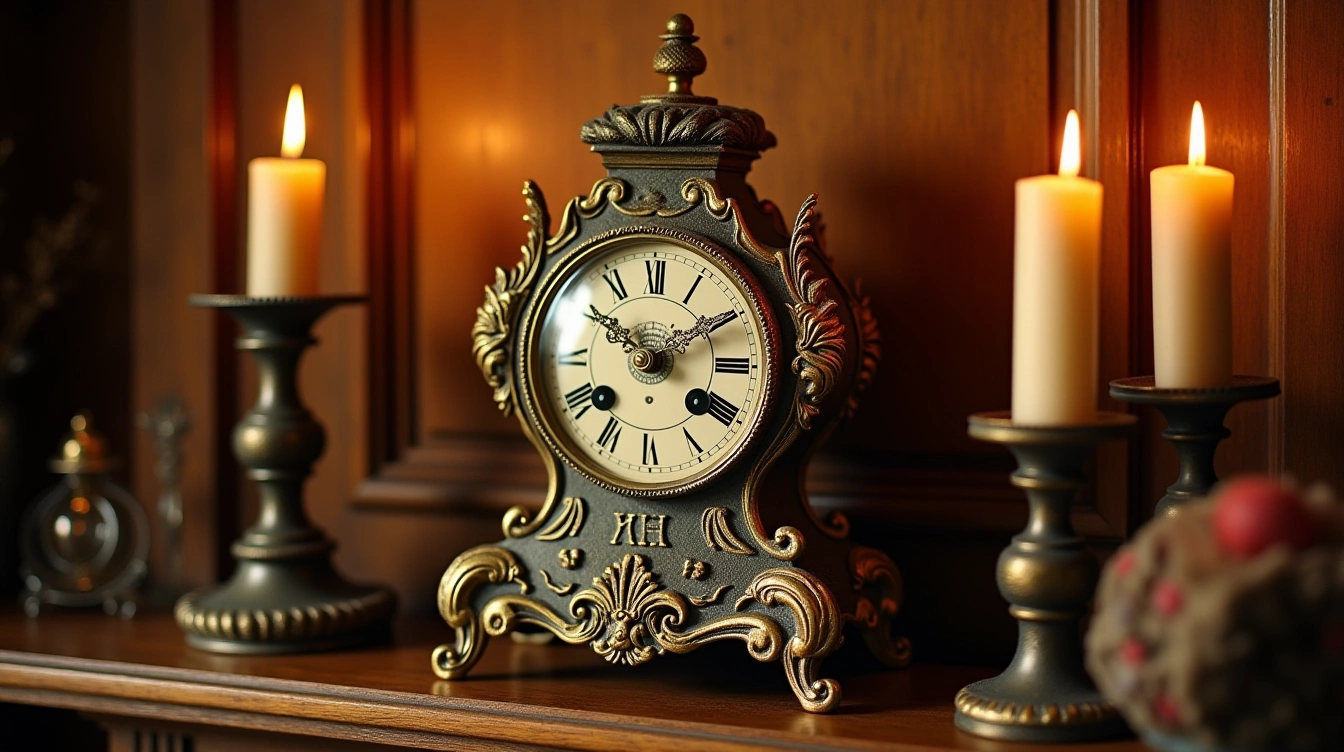Discover the Elegance of Authentic French Timepieces: A Collector’s Journey
French timepieces represent centuries of unmatched craftsmanship and artistic excellence. According to the French Federation of Clockmakers, the vintage timepiece market grew by 18% in 2024, driven by collectors seeking authentic heritage pieces. What draws passionate collectors to these extraordinary mechanical marvels that have shaped horological history? Whether you’re beginning your collection or seeking rare specimens, https://www.lapendulerie.com/en/ offers expert guidance into France’s remarkable clockmaking legacy.
The Golden Age of French Clockmaking: Heritage and Artistry
The reign of Louis XIV marked the beginning of France’s dominance in European clockmaking. Royal workshops at Versailles became laboratories of innovation, where master craftsmen like André-Charles Boulle perfected the art of bronze decoration and marquetry. These artisans didn’t simply measure time—they transformed it into sculptural masterpieces that adorned the world’s most prestigious palaces.
In the same genre : How can I use color psychology to influence the mood in my home?
The Empire period elevated French clockmaking to unprecedented heights. Napoleon’s campaigns brought exotic materials and international influences back to Parisian workshops. Clock cases became canvases for patriotic themes, featuring eagles, military trophies, and classical mythology rendered in finest bronze and marble.
French horologists revolutionized mechanical precision during this era. The invention of the suspension spring by Christiaan Huygens found its finest expression in French hands, while masters like Abraham-Louis Breguet developed complications that remain benchmarks of excellence today.
In parallel : What are the most effective ways to declutter and organize home spaces?
The Art Déco movement of the 1920s represented the final flourish of France’s clockmaking supremacy. Geometric forms and modern materials merged with traditional craftsmanship, creating pieces that captured the spirit of innovation while honoring centuries of artisanal heritage.
Legendary French Clockmakers: Masters Worth Collecting
The French horological tradition has produced some of history’s most revered clockmakers, whose creations continue to command exceptional prices at auction houses worldwide. These master craftsmen established techniques and artistic standards that define luxury timekeeping to this day.
- Abraham-Louis Breguet (1747-1823): The undisputed king of French horology, Breguet invented the tourbillon and created timepieces for Napoleon and Marie Antoinette. His clocks feature distinctive guilloché dials and open-tipped hands that bear his name.
- Frédéric Japy (1749-1812): Pioneer of mass production techniques while maintaining exceptional quality. Japy clocks from the early 1800s are prized for their reliable movements and elegant Empire-style cases, often featuring bronze doré decorations.
- Vincenti & Cie (1850-1920): Specialized in ornate mantel clocks with intricate bronze work and detailed figural decorations. Their pieces showcase the height of Second Empire decorative arts with mythological and orientalist themes.
- Raingo Frères (1813-1870): Masters of the Romantic period, known for their elaborate sculptural clock cases featuring historical and literary figures. Their collaboration with renowned bronziers created true works of art.
Authenticating These Horological Treasures: Expert Guidelines
L’authentification d’une pendule française authentique commence par l’examen minutieux des signatures gravées. Les maîtres horlogers français apposaient leur nom sur le cadran, souvent accompagné de la mention “à Paris” ou de leur ville d’origine. Ces gravures présentent une profondeur et une régularité caractéristiques du travail artisanal d’époque.
Les matériaux constituent un indicateur fiable : le bronze doré au mercure des pièces du XVIIIe siècle développe une patine particulière, impossible à reproduire artificiellement. Les reproductions modernes utilisent souvent des alliages différents qui sonnent différemment au toucher et présentent une couleur moins chaleureuse.
L’observation du mouvement révèle les techniques d’époque : fichage à la main des roues, polissage des pivots, forme des dents d’engrenage taillées individuellement. Les mécanismes authentiques portent souvent des numéros de série discrets, gravés à la main sur les platines principales.
La cohérence stylistique entre l’esthétique du boîtier et la période supposée constitue un test décisif. Chaque époque possède ses codes décoratifs spécifiques qu’il convient de connaître parfaitement.
Investment Potential and Market Dynamics for Collectors
Le marché de l’horlogerie française ancienne connaît une croissance remarquable depuis 2024, avec des hausses de valeur atteignant 15 à 25% selon les segments. Cette dynamique s’explique par une demande internationale croissante et une offre qui se raréfie naturellement.
Les créateurs les plus recherchés comme Boulle, Lepine ou les maîtres parisiens du XVIIIe siècle voient leurs œuvres s’échanger entre 3 000 et 50 000 euros selon l’authenticité et l’état. Les pièces d’époque Louis XV ou Empire représentent des valeurs refuges particulièrement prisées des collectionneurs avertis.
Pour investir intelligemment, privilégiez les pièces documentées avec leur provenance, évitez les restaurations lourdes et misez sur des ateliers réputés. Le potentiel d’appréciation reste excellent sur le long terme, notamment pour les mécanismes complexes en parfait état de fonctionnement.
Caring for Your French Antique Clock Collection
Your French antique clock represents centuries of craftsmanship that deserves meticulous care to preserve its heritage and value. These mechanical marvels require a delicate balance between active maintenance and respectful preservation to ensure they continue ticking for future generations.
Daily care begins with proper placement away from direct sunlight, humidity fluctuations, and vibrations that can disrupt the delicate mechanisms. Dust accumulation poses a significant threat to moving parts, so gentle cleaning with a soft brush every few weeks prevents debris from infiltrating the clockwork. Never attempt to oil or adjust the movement yourself, as period-appropriate lubricants and techniques require specialized knowledge.
Professional restoration becomes essential when your clock loses time consistently, develops unusual sounds, or shows visible wear on the dial or case. A qualified horologist experienced in French movements can assess whether conservation or active restoration better serves your piece’s long-term integrity. This expertise ensures that any intervention maintains authenticity while preserving the clock’s historical and monetary value.
Environmental stability protects your investment most effectively. Maintain consistent temperature and humidity levels, position clocks away from heating vents, and ensure stable surfaces that won’t shift over time. These preventive measures safeguard both the mechanical precision and the aesthetic beauty that make French antique clocks such treasured collectibles.
Your Questions About French Antique Clocks
Collecting French antique clocks raises many questions about authenticity, value, and care. Here are the most common concerns from collectors and enthusiasts, with expert insights to guide your horological journey.
How can I authenticate a genuine French antique clock?
Look for maker’s signatures on the dial and movement, period-appropriate materials, and construction techniques. Examine case joinery, brass quality, and escapement style to confirm authenticity and dating.
What are the most valuable French clock makers to look for?
Seek pieces by Abraham-Louis Breguet, Japy Frères, or Vincent & Cie. Empire period clocks (1804-1814) and signed bronziers like Thomire command premium prices among collectors.
Where can I find authentic French clocks for sale?
Reputable antique dealers, established auction houses, and specialized horological galleries offer authenticated pieces. Always request provenance documentation and condition reports before purchasing significant investments.
How much should I expect to pay for a French antique clock?
Prices range from $500 for simple mantel clocks to $50,000+ for important makers. Condition, rarity, and provenance significantly impact value in today’s market.
What maintenance do French antique clocks require?
Professional servicing every 3-5 years maintains optimal performance. Keep movements clean, oil regularly, and protect from humidity. Never attempt repairs without horological expertise.
Can antique French clocks be used daily?
Quality French movements were built for daily use. With proper maintenance and gentle handling, most antique clocks can provide reliable timekeeping for decades more.













